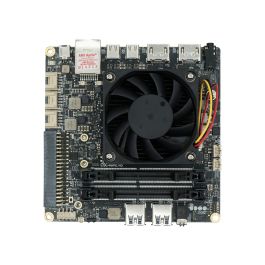With Woodlawn Industrial Park beginning to wind down, its fun to start thinking about my next layout! Just to be clear, this project is still in the very early stages. I will not be able to get started with this project in any significant way until well into 2022.
Anyway, let’s start with some background: I have a diverse set of interests when it comes to model railroading. It was always clear to me that a single layout would never satisfy all of my desires. Consequently, I have always intended to build two layouts.
The first layout was to be a highly detailed HO-scale manually-operated switching layout which is what became Woodland Industrial Park.
The second layout that I have been thinking about is going to be a portable, fully automated computer-controlled N-scale layout. So in a sense it is at the opposite end of the spectrum from Woodlawn. This layout will have a continuous run and will not have super detailed scenery. The landscape and scenery only has to be “good enough”, not perfect. Not too many structures but a lot of trees.
Although I really enjoy switching freight cars on the Woodlawn layout, I also sometimes like watching trains just run. The best way to do this is to let a computer run the trains so that I can stand back and be a railfan on my own layout. Also, I want this layout to be a portable so I can potentially take it to train shows.
Some of the technologies that I will be using in this layout:
The track plan will be super simple: effectively it will be an oval with several passing tracks. The trick will be to fit this into a relatively small space and still have it look acceptable.
I have no idea what form the benchwork will take but it will have to be lighter than what I used for Woodlawn for sure.
I have no idea what kind of track I will be using but I would like something smaller than Code 80. Atlas code 55, Peco code 75 or Micro Engineering?
So in a nutshell, there is still a lot of thinking and design work ahead but it should be fun!
Anyway, let’s start with some background: I have a diverse set of interests when it comes to model railroading. It was always clear to me that a single layout would never satisfy all of my desires. Consequently, I have always intended to build two layouts.
The first layout was to be a highly detailed HO-scale manually-operated switching layout which is what became Woodland Industrial Park.
The second layout that I have been thinking about is going to be a portable, fully automated computer-controlled N-scale layout. So in a sense it is at the opposite end of the spectrum from Woodlawn. This layout will have a continuous run and will not have super detailed scenery. The landscape and scenery only has to be “good enough”, not perfect. Not too many structures but a lot of trees.
Although I really enjoy switching freight cars on the Woodlawn layout, I also sometimes like watching trains just run. The best way to do this is to let a computer run the trains so that I can stand back and be a railfan on my own layout. Also, I want this layout to be a portable so I can potentially take it to train shows.
Some of the technologies that I will be using in this layout:
- DCC for train control. I will most likely get a dedicated Digitrax DCS52 as the command station for this layout. I will be using DCC only for train control. Everything else will be controlled directly from computers.
- The layout will be controlled by a network of Raspberry Pi 4 single board computers. These are really cheap and very powerful.
- Turnouts will be controlled by miniature model aircraft linear servos. The servos will be driven directly from the GPIO pins on the Raspberry Pi. The servos are controlled by means of pulse width modulation. It turned out to be really easy to control the servos with a few lines of Python code.
- The layout will need feedback sensors for the tracks so that the computer knows where the trains are. The sensors will be directly connected to the computer. There are several possibilities:
- Magnetic reed sensors triggered by rare earth magnets mounted on locomotives. I have used this in the past and it worked really well.
- Current draw detection - like for example a Digitrax BDL 168. I am not super enthusiastic about this approach as it requires a lot of wiring. I want this layout to be light and portable.
- Computer vision system for detecting trains in blocks. I did some initial experiments and was able to train a convolutional neural network to detect block occupancy. But I don’t want to have to use a cloud-based server to run the neural network code. Need to see if a single board computer like an Nvidia Jetson Nano can handle inference tasks
The track plan will be super simple: effectively it will be an oval with several passing tracks. The trick will be to fit this into a relatively small space and still have it look acceptable.
I have no idea what form the benchwork will take but it will have to be lighter than what I used for Woodlawn for sure.
I have no idea what kind of track I will be using but I would like something smaller than Code 80. Atlas code 55, Peco code 75 or Micro Engineering?
So in a nutshell, there is still a lot of thinking and design work ahead but it should be fun!


